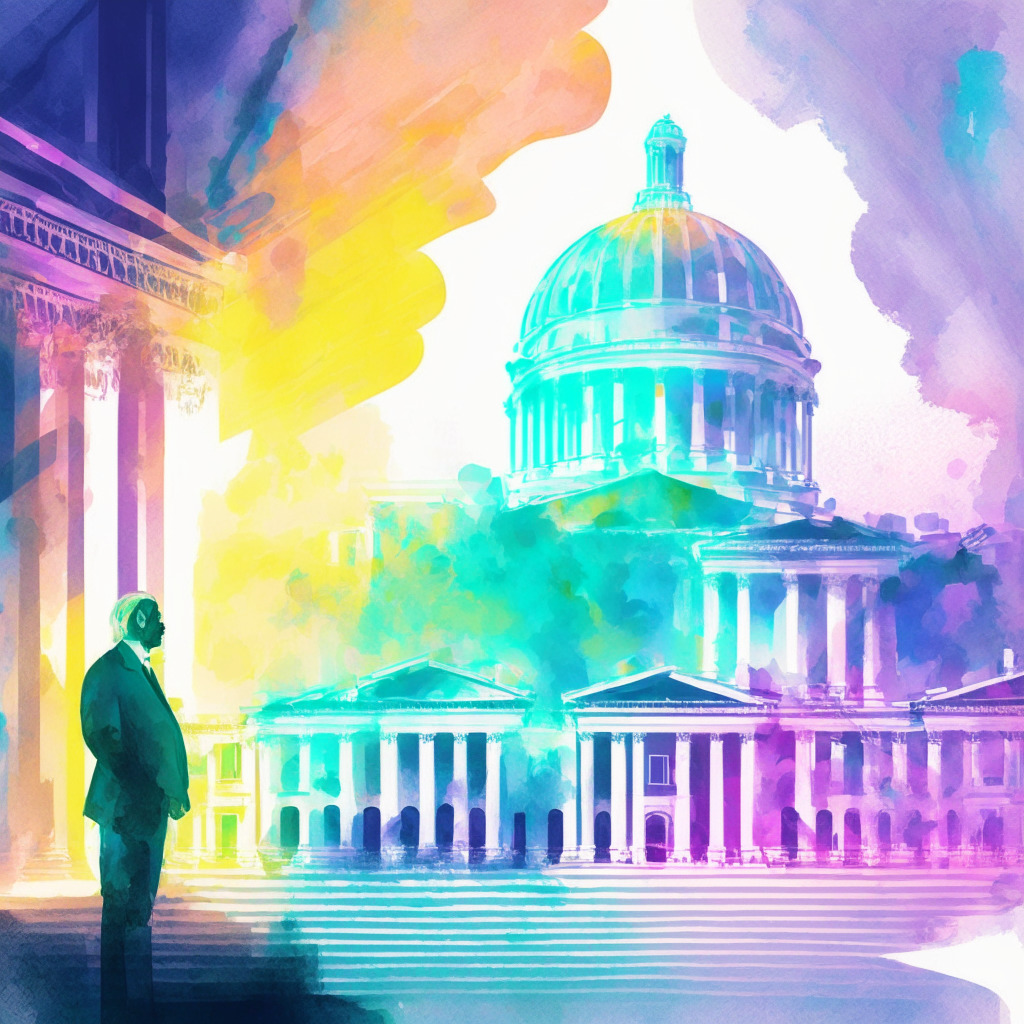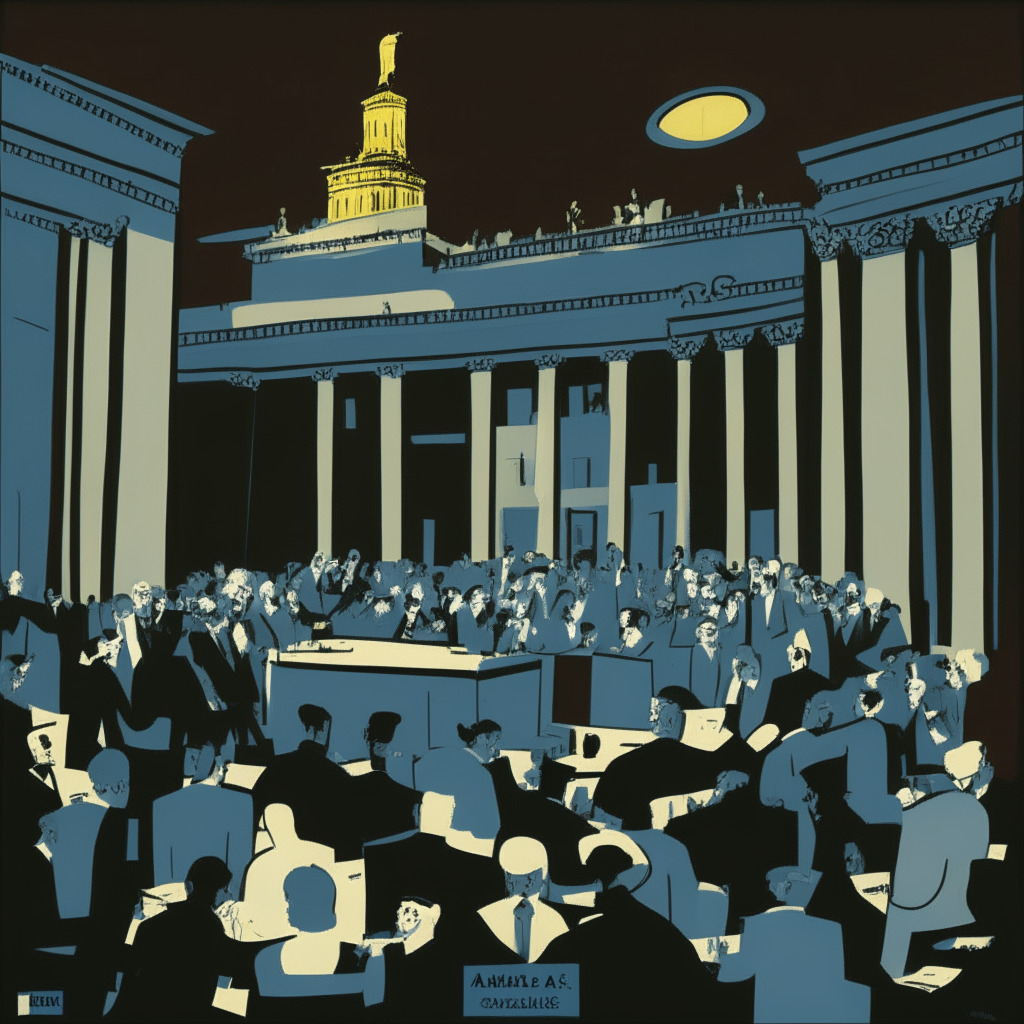“Hong Kong is taking steps towards limiting retail stablecoin trading among individual investors due to increasing crypto adoption. Stablecoins’ value is pegged to fiat currencies, providing some stability against crypto turbulence. However, the recent TerraUSD stablecoin collapse underscores the need for stringent regulation to ensure investor protection and maintain price stability.”
Search Results for: Stablecoins
Canadian Securities Administrators Unveil Interim Framework for Stablecoin Issuers: Ensuring Safety or Stifling Creativity?
“The Canadian Securities Administrators (CSA) has unveiled a framework to guide exchanges and issuers of stablecoins, aiming to enhance transparency and trust. The rules require stablecoin issuers to maintain sufficient reserves with a qualified custodian and disclose crucial platform information, underscoring the need for investor information and protection.”
The Intricate Web of Illicit Fentanyl Trade Powered by Cryptocurrency
The U.S Treasury’s Office of Foreign Assets Control (OFAC) has targeted several cryptocurrency wallets involved in the illicit trade of fentanyl. Most transactions were conducted via Stablecoins on Ethereum and Tron networks. These wallets, save for one, were hosted on a centralized crypto exchange, allowing the illicit flow of hundreds of thousands of dollars worth of cryptocurrency.
Decentralized Exchanges: The New Frontier for Money Laundering or a Catalyst for Blockchain Integrity?
“Illicit funds” totaling $7 billion have been laundered through Decentralized Exchanges, cross-chain bridges and non-KYC exchanges, surpassing Elliptic’s predictions. Complex methods like derivatives trading and limit orders provide obscurity for money laundering schemes, with $2.7 billion laundered from July 2022 to 2023.
Balancing Act: Supervising AI Vs. Regulating Cryptocurrencies – Who Gets the Upper Hand?
This article discusses a project launched by UNESCO and the Dutch government to study AI supervision across Europe, aiming to develop guidelines from best practices. It also highlights the contrast of some nations focusing heavily on AI regulations, while cryptocurrency protocols, such as for stablecoin transactions, are being neglected. The importance is stressed of striking a balance between embracing technological advances and ensuring proper regulation for consumer protection.
Regulatory Dilemma: Hong Kong’s Caution vs. UK’s Opportunity in Crypto Oversight
As the global crypto landscape evolves, regulators are trying to create market control measures. Concerns are raised around stablecoins’ volatility due to reserve management. Regulatory approaches differ worldwide, with the UK aiming to improve Web3 regulation, by refining their KYC practices using innovation like blockchain analytics. However, they’ve also shown a strict attitude towards the industry. Striking a balance between industry growth and investor protection is a ongoing struggle for regulatory authorities.
Ethereum’s Tussle with Resistance & Bitcoin Minetrix: New Cloud Mining Trend
“Ethereum’s marginal drop by 0.2% with a current standing 2.5% higher than two weeks ago suggests remaining uncertainty in the cryptocurrency market. Deepening ties with PayPal and Visa provide a boost, yet its breakthrough capacity remains unsure due to global financial stability.”
PayPal’s PYUSD Stablecoin: Welcomed Asset or Threat to Tether’s Predominance?
Tether co-founder, William Quigley, in a recent interview expressed skepticism towards the acceptance of PayPal’s impending stablecoin. Highlighting that cryptocurrencies earn credibility over time, he outlined that new entrant, PayPal, would face challenges in gaining trust and performance reputation among crypto users. He flagged significant regulatory challenges and the high cost of compliance as potential hurdles for PayPal’s stablecoin.
Alameda’s Dubious Token Transfers and FTX’s Collapse: A Case for Crypto Regulation
Alameda Research transferred a massive $4.1 billion in FTT tokens to FTX exchange before its bankruptcy. This move, along with other dubious on-chain activities and the substantial control over FTT token supply, may have fueled their mutual financial balance sheets. These alarming transactions highlight the urgent need for transparent, comprehensive financial disclosures and tighter regulations in the blockchain networks.
Navigating Uncharted Crypto Waters: The Impact of New House Leadership on Digital Asset Regulation
“A staunch crypto advocate, Representative Patrick McHenry, has provisionally stepped into the role of US House Speaker. McHenry has shown appreciation for the significance of American innovation and advocated for stablecoin regulation. These transitions bring opportunities and challenges for digital currencies and their regulation.”
Introducing DRAM: Dirham-Backed Stablecoin Aims for Global Impact Amidst Regional Restrictions
Swiss company DTR presents a Dirham-supported stablecoin, DRAM, aiming to facilitate global value transfer. Despite its non-availability in UAE and Hong Kong, the token, developed by Dram Trust is listed on decentralized exchanges like Uniswap, PancakeSwap trading with Binance Coin.
Ardana Lab Debacle: A Tale of High Hopes, Poor Financial Management and Lost Investments
“Ardana Labs promised an innovative stablecoin platform for Cardano, however, the project collapsed due to alleged poor financial management. Xerberus’ analysis suggests Ardana’s executives may have misused project funds, leading to a $4 million loss, emphasizing the inherent risks in new-age Web3 startups.”
Unraveling the Paradox of Increased Decentralization: The Optimism Network’s Stride and Binance’s Unexpected Move
The Optimism network has launched its testnet version of a fault-proof system aimed at increasing the efficiency and decentralization of the Superchain. Typically reliant on centralized sequencers, the new system offers modular options to prevent fraud. However, co-founder of Ethereum, Vitalik Buterin, asserts the importance of user-submitted fraud proofs to maintain true decentralization.
Binance Axes BUSD Lending Services: A Setback or Smart Strategy?
“Binance is discontinifying its Binance USD (BUSD) lending services, with a full termination of BUSD support planned for 2024. The decision comes after issuer Paxos severed ties with Binance amid litigation with the U.S. Securities and Exchange Commission. Users are now urged to convert their BUSD to other currencies.”
Unfolding the DRAM Narrative: A Dirham-Backed Stablecoin Amid Regulatory Challenges
“Distributed Technologies Research has developed DRAM, a Dirham-backed stablecoin listed on DeFi protocols Uniswap and PancakeSwap. The stablecoin aims to bring stability to countries with high inflation, linked to UAE’s native currency performance. However, regulatory limitations present challenges to its acceptance and growth.”
Navigating the Regulatory Maze: Driving Stablecoin Legislation Under Biden’s Administration
Chair Patrick McHenry of the US House of Representatives’ Financial Services Committee affirms his commitment to regulate stablecoins. He steers two digital asset bills targeted at stablecoin regulation, and bringing clarity to the role between the CFTC and SEC. McHenry highlights potential bipartisan support and the global influence of dollar-denominated stablecoins, emphasizing complex power dynamics beyond the digital asset scope.
Government Shutdown Dodged: Possible Fallout for Cryptocurrency Regulation
“The future of cryptocurrency regulation was at risk with the potential for a government shutdown. This stalemate could have hindered several key crypto-focused bills, including the Financial Innovation and Technology for the 21st Century Act, the Blockchain Regulatory Certainty Act, among others, shaping crypto’s future.”
Demystifying Crypto Synthetic Assets: Unmasking the Potential and Pitfalls
“Crypto synthetic assets are digital financial instruments that replicate the value of real-world assets. They are superior in terms of accessibility, liquidity, and programmability but come with unique risks. Types include synthetic stablecoins, tokenized commodities and equities, and yield-bearing assets in the DeFi ecosystem.”
Ethereum ETFs: A New Dawn or a Regulatory Nightmare?
Bitwise initiates trading for two Ethereum-focused ETFs in a major milestone for cryptocurrency. In contrast, the realization of a Bitcoin ETF faces delays, as the SEC decision-making process on Bitcoin ETF applications stalls. Regulatory hurdles and controversies around stablecoins also cast a shadow over this progress.
Navigating Regulatory Tensions: SEC’s Scrutinized Actions Against Binance and the Crypto Future
The SEC’s attempt to enforce stricter regulations around operations of major cryptocurrency exchanges, including accusations against Binance, has sparked debate. Questions are being raised about SEC’s use of lawsuits to change regulations, and its consistent use of the Howey Test for identifying securities. Not all digital assets, including certain stablecoins, believe they should be classified as securities. This situation challenges the crypto community to contemplate the impact of such regulatory actions on the future of cryptocurrency.
Unraveling the JPEX Scandal: A Testament to Evolving Crypto Regulations and Ensuing Conflicts
Hong Kong and Macau authorities have apprehended 18 suspects linked to the JPEX crypto exchange fraud case, seizing over $2.8 million. Despite this, primary orchestrators are still free, leading to local police seeking Interpol’s help. This incident underscores the importance of tighter crypto regulations, as it’s one of Hong Kong’s largest cases with losses of $178 million.
Unraveling the Crypto Carousel: SEC vs Binance, and the Circle Defence
The blog post discusses the legal fight between the SEC and cryptocurrency exchange Binance over the classification of digital assets as securities. It also touches on Circle’s argument that stablecoins linked to the U.S. dollar, such as BUSD and USDC, shouldn’t be categorised as securities. The outcome of the legal battle could greatly impact the future of cryptocurrency regulations.
Exploring Russia’s Pivot to Crypto: Boosting Trade Ties or Cannibalizing Traditional Banking?
Russian entrepreneurs aim to use “digital assets” and a “unified digital currency” for trade with BRICS and other nations. The idea of utilizing digital financial assets (DFAs), which may encompass digitized commodities, CBDCs, digital securities, cryptoassets, and stablecoins, in international payments is garnering attention. The possibility of creating a unified digital currency for cross-border transactions is also being evaluated.
Navigating Complex Debt: Founder of DeFi Protocol Curve’s Multi-Million Dollar Maneuver
Michael Egorov, founder of DeFi protocol Curve, employed a strategy to settle his extensive obligations on Aave. He deposited millions of CRV as collateral on a lending platform, and borrowed Curve’s crvUSD stablecoin, which he exchanged for USDT to clear his Aave debt. Despite significant outstanding debt across several DeFi platforms, Egorov has been proactive in lessening his debt and usage rate.
Tightening the Reins: How Brazil’s Crypto Regulation Impacts Market Growth and Sustainability
The steep rise of cryptocurrency imports in Brazil prompted the Central Bank to tighten regulations. While these measures are necessary for investor protection, questions arise whether this can hinder the market’s growth. Regulators globally struggle to strike a balance between market growth and sufficient regulation.
Crypto Founder’s Stand-off with SEC: Impact on Future of Blockchain and Investor Trust
“Do Kwon, founder of Terraform Labs, resists a U.S. SEC extradition request following the implosion of his stablecoins, Terra and Luna, causing a massive loss in market value. The SEC accuses Kwon of misleading investors about Terraform’s stablecoin security. This case could shape future crypto world regulations and investors’ risk assessments for stablecoins.”
Binance’s Exit and CommEx’s Entrance: The Mysterious Shift of Crypto Operations in Russia
“Binance has exited Russia, selling to newcomer CommEx. Despite little detail about CommEx’s origins, it is registered in Seychelles serving CIS and Asian clientele. Its initial focus is on P2P transactions in Russia with goals to rapidly expand as a cryptocurrency exchange.”
Expanding the Stablecoin Universe: Circle’s EURC Now on Stellar Network
Stablecoin issuer Circle has introduced a new version of its euro-backed stablecoin, EURC, now available on the Stellar network. This innovation offers users the ability to handle business via blockchain networks in local currencies. However, converting blockchain transactions into local currencies remains complicated, highlighting the integration challenges that the blockchain community faces.
Gemini’s Indian Expansion: Blockchain’s Untapped Potential and Hidden Quicksand
Gemini, a cryptocurrency exchange, recently affirmed a $24 million investment for its expansion in India, a country teeming with technological innovation. Gemini’s ambitions of infrastructural growth are boosted by India’s growing status as a hub for technological development. Yet, the unpredictability of cryptocurrency and the volatile nature of regulations pose potential challenges.
Navigating the Dawn of the Crypto Revolution: Challenges, Speculation, and the Road Ahead
“We are on the brink of a new era in virtual economics, foreseen by Coinbase exec, Jesse Pollak, with massive crypto application use. Base, Coinbase’s new blockchain, is joining key players like Ethereum, providing a platform for DApps development. However, challenges like reducing DApp access cost and improving wallet experiences need to be overcome. Coinbase envisions exiting the speculative stage into utility for everyday people, realizing the potential of diverse blockchain applications.”
Ripple’s Expansion in the UK: Crypto Boom or Regulatory Burden?
Ripple, a US fintech and blockchain firm, is expanding its British presence amidst regulatory challenges in the US. This follows the UK’s strategic efforts to become a global hub for crypto and fintech firms, including legislation regulating cryptocurrencies and stablecoins. Critics, however, fear this may limit open innovation.
The US Political Unrest: A Roadblock for Crypto-focused Bills and Digital Asset Future
“The threat of a US government shutdown could influence the future of digital assets. Crypto-focused bills like the FIT, Blockchain Regulatory Certainty Act, and Keep Your Coins Act risk being delayed. Any shutdown could stall these bills’ progress until government funding is secured for the next fiscal year.”































